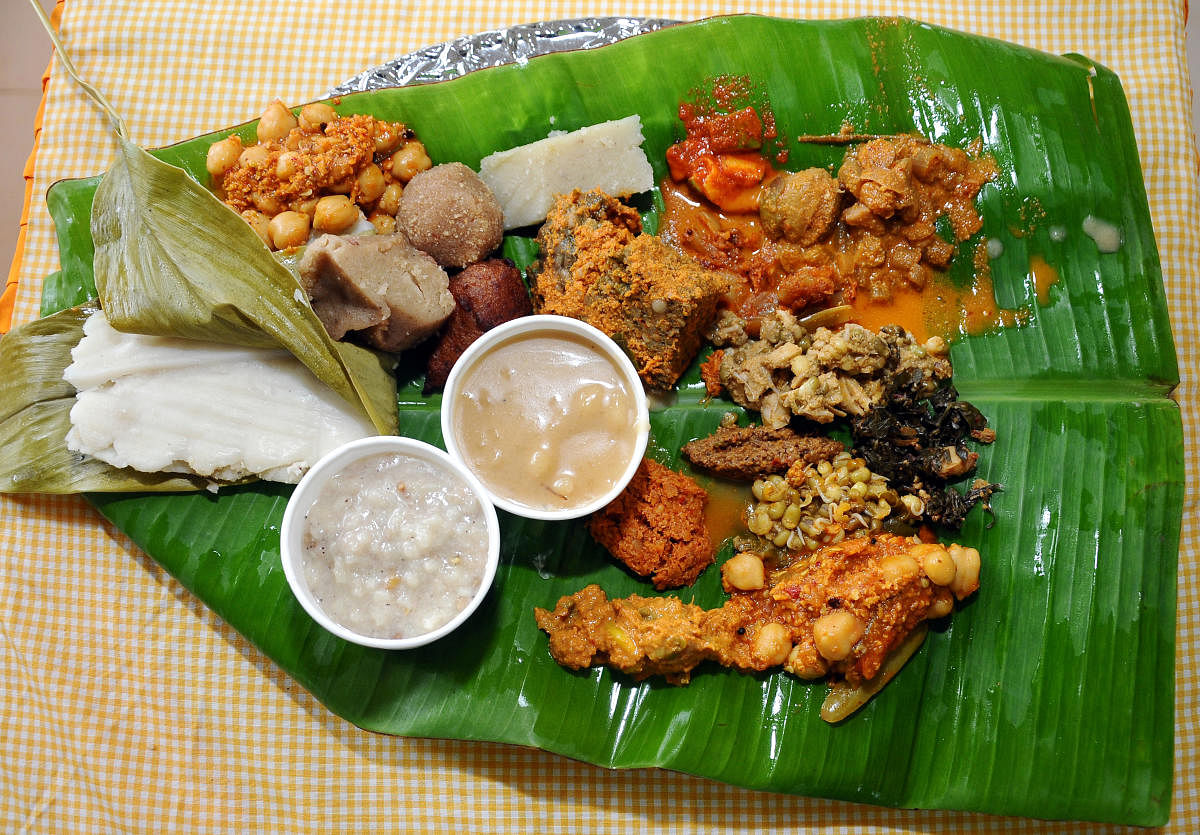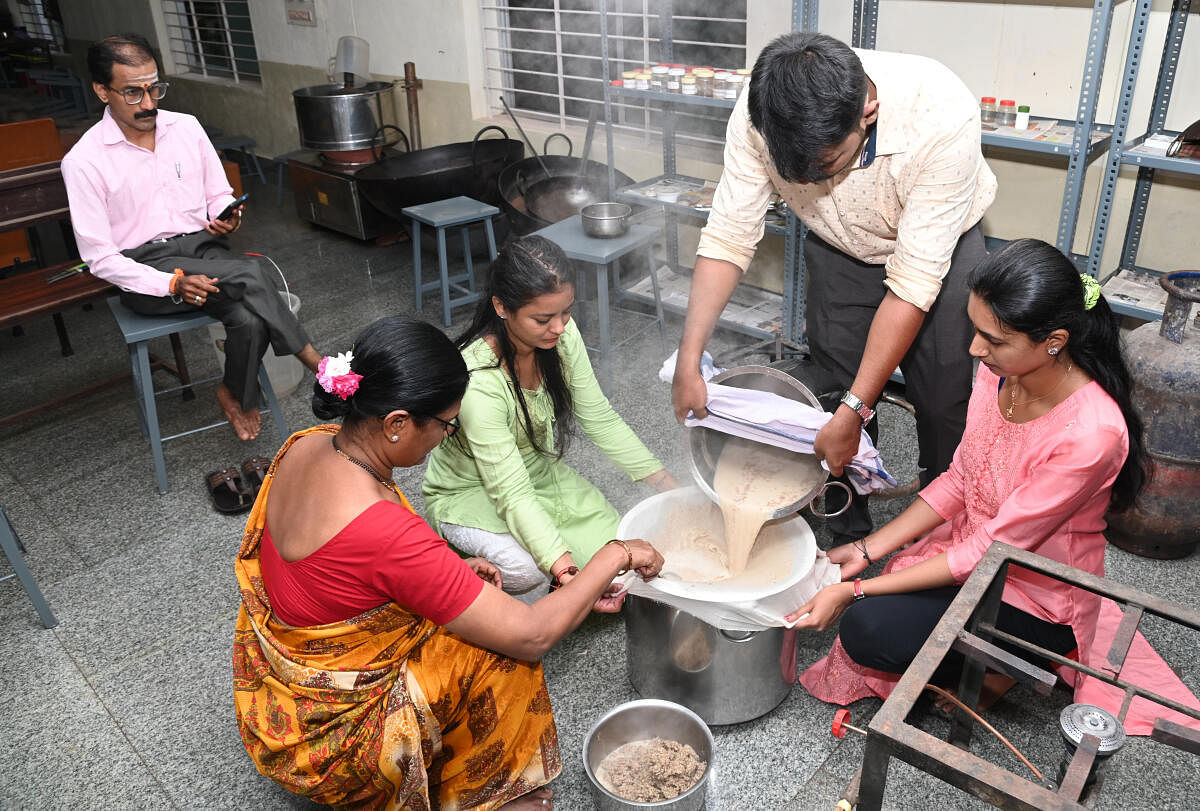

In mid-July, communities in coastal Karnataka join together around feasts of local seasonal vegetables and traditional recipes to celebrate ‘Aati’, the fourth month in the Tulu calendar. The spread of dishes on the table include ‘patrode’, ‘tajankuda ambade’, ‘gendada adde’ and ‘tekkareda adde’.
Aatidonji Dina is celebrated in the month of Aati or ‘Ashada’ (in Kannada). The traditions associated with Aati, observed from July 15 to August 15, emphasise the close relationship between humans and nature, explains Arun Ullal, a Kannada lecturer and an expert on Tulunadu’s folklore.
“It involves feasting on 40 to 60 mouth-watering traditional delicacies, but it is so much more than that,” says Arun.
The lavish spread of food during Aatidonji Dina was once the only source of sustenance in a society that was predominantly an agrarian society some decades ago. Due to heavy rains and without any work or income after sowing season, farmer families had to depend on wild greens (thajank, thimare) which grew in their backyard. “Uppad pachil (pieces of jackfruit preserved in salt water) were the only vegetable varieties,” recollects Chanchala, a local. Therefore, the festival includes the vegetables available in the vicinity of homes and backyards, said to be good for health in the rainy weather.
Colourful ritual
As a result of this monsoon-driven scarcity, Aati is seen as symbolic of severe hardships and diseases. Thus, the month is considered an inauspicious month for weddings, housewarming ceremonies and temple festivals.
During such a gloomy time, ‘Aati Kalenja’, represented by a member of the Nalke community attired in a colourful dress and make-up, appears at the doorstep accompanied by drummers. After the dance performance, Aati Kalenja accepts offerings in kind, and moves on to the next house. “Aati Kalenja, a fast-disappearing tradition, instils courage and hope in families that the worst is behind them,” says Arun.
Aati celebration is incomplete without the ‘Aati Amavasya’, says columnist Manohar Prasad. “On the Amavasya day, Tuluvas drink a bitter concoction called paaleda kashaya, with a belief that the kashaya will grant them immunity from all diseases for a year,” he adds.
Due to a spate of deaths from drinking the concoction of a wrong tree, many organisations now prepare kashaya extracted from ‘paale mara’ (Alstonia scholaris) and offer it free of cost to the public. “After drinking kashaya, family members are served ‘metteda ganji’ ('menthe ganji' in Kannada), a nutritious dish made from rice blended with coconut milk and methi seeds (fenugreek),” explains Manohar.
During Aati, a ritual of remembering the dead is also observed. “If the departed relatives have died without being married, a marriage is solemnised. This ritual, known as ‘kule madime’, is conducted to fulfil the desires of departed souls,” informs Arun.
As a result of the festival’s popularity, every year, more and more corporates jump onto Tulunadu’s distinctive bandwagon. From automobile companies to jewellers, several brands are set to host Aati celebrations this week.
Some worry that the next generation may not get a full picture of Tulunadu’s history, beyond the culinary celebrations of Aati. “But with more and more organisations showing interest in Aatidonji Dina, we see the involvement of people cutting across all religions and ages. It is indeed heartwarming,” Arun says.